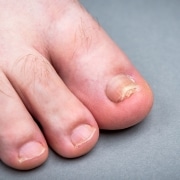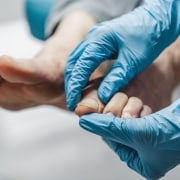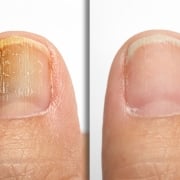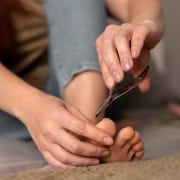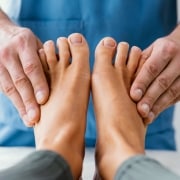The Connection Between Diet and Toenail Fungus
Toenail fungus is a common problem. And it’s extremely hard to get rid of. But what if there was something you could do to prevent it in the first place? Let’s talk about that for a moment. Then, you can schedule an appointment with your podiatrist in Austin, TX, for more help.
The Connection Between Diet and Toenail Fungus
Most people don’t relate their diet to their toenail fungus. But they should! Eating a balanced diet supports your immune system. A strong immune system could help prevent toenail fungus. And if you already have it, at the very least, eating healthy could help keep it from getting worse.
So, what exactly causes toenail fungus in the first place?
- Weakened Immune System
- Candida Overgrowth
- Vitamin and Mineral Deficiencies
- Other Issues (improper hygiene practices, underlying medical conditions, etc.)
Improving Gut Health to Help Improve Your Immune System
Eating foods and oils that improve your gut health is a great way to ward off toenail fungus. Doing so also improves your immune system.
Try to eat fermented foods like yogurt, sauerkraut, kefir, garlic, onions, and asparagus. Also, include whole grains, fruits, vegetables, nuts, seeds, oily fish, and healthy fats like olive oil and avocados. These will all keep your gut healthy. They will also improve your immune system.
On a side note: It’s important to drink a lot of water. Lots of water! Stay hydrated.
What Feeds Toenail Fungus?
Foods with lots of sugar and refined carbs feed toenail fungus. You should also avoid alcohol. All of these things will wreck the healthy balance in your gut. And that could lead to yeast overgrowth. That, in turn, could lead to a fungal infection. Especially sugar. Sugar and refined carbs are fuel for fungal growth.
What Happens if You Don’t Treat Toenail Fungus?
It’s extremely important to treat toenail fungus immediately. If you don’t, the infection will get worse. It will (at some point) spread to other parts of your body, like your other toes, skin, and maybe even your fingernails. So, don’t put off getting a toenail fungus treatment in Austin, TX, the second you notice something’s not quite right with your toes.
Looking for a Reputable Podiatrist in Austin, TX?
The sooner you treat your toenail fungus, the better. Don’t wait until the fungus spreads to other parts of your body. Please Contact Dr. Jeffrey LaMour today to schedule an exam.



